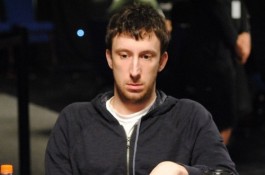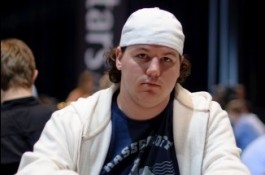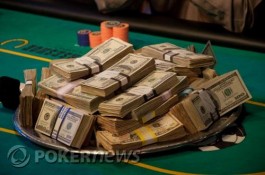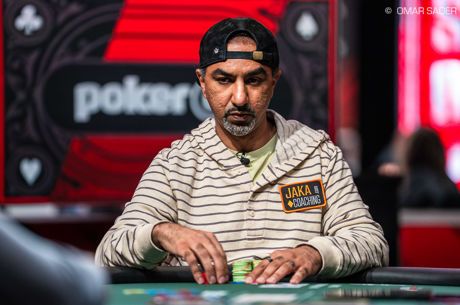Playing WSOP Event No. 3 the $1,000 NLH with Vanessa Rousso
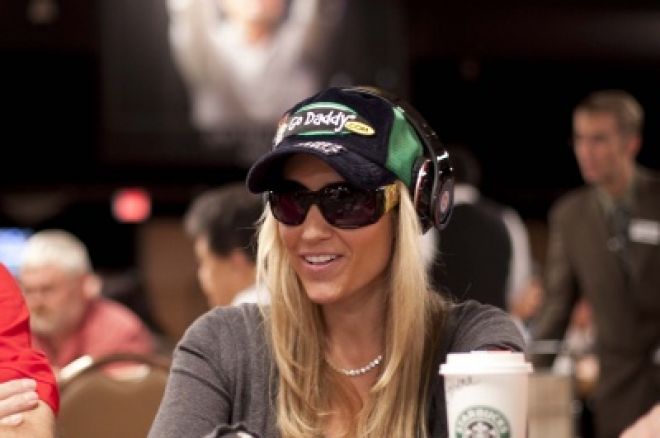
For professional tournament pros, the lower buy-in large-field no-limit hold��em tournaments can be quite the minefield, but to win, you must adjust. Vanessa Rousso talked to PokerNews about a hand in which she employed a modified strategy when playing Day 1A of Event 3 at the 2010 World Series of Poker, a $1,000 buy-in no-limit hold��em event that attracted 4,345 players.
What were the blinds when the hand took place, and what is your general preflop strategy in these events?
The blinds were 75-150. At this point in the tournament, when there are no antes, I have a pretty loose preflop range as long as I have an above average chip stack and I��m in position, especially in a low buy-in like this. The reason is that since I have such a significant skill edge against most of the other players at the table, I want to play a lot of hands. So, I��m a little more experimental with the hands I��m willing to call a raise with than I would normally be. I��m adjusting for the fact that (a) the blinds are still relatively low, so it��s not that expensive, and (b) I have an above-average chip stack in a very weak field.
So in this hand, a very tight, readable player raised in middle position. A player called to my right, and it came to me on the button with ace-four of hearts. I called and the big blind called. We went four ways to flop. The flop came ten-high, all hearts, so I flopped the nuts. The big blind lead and the very tight player who was the preflop raiser, raised a strong, big amount. At that point, the raise was about seven percent of his chip stack. I did the math and realized that if he put in a pot-sized bet in on the turn, I could probably get his whole stack.
What kind of hand are you putting him on at this point?
I figured that for him to make such a strong bet, he had to have a set or an overpair. Obviously it��s impossible that he has aces with the ace of hearts because I have it. He might be drawing dead to runner-runner with an overpair, but I really thought he had a much stronger hand with his bet. The player to my right folded, and I just flat called his raise. I wanted to make sure the board didn��t pair on the turn.
This is something I do to reduce variance. A lot of the time, I��ll make my moves on the turn, rather than on the flop with strong hands in large fields like this because in order to survive a very large field, you��re going to have to survive a lot of situations where you��re a 70 percent favorite. The thing is, even if you are a 70 percent favorite, three out of ten times you��re going to get sucked out on. Even though you��re a fairly large favorite with those 60-40��s or 70-30��s, you can actually cut your variance in half by getting your money in on the turn. That��s why I didn��t raise on the flop. I decided to go for variance reduction.
What about the concept of ��protecting your hand��? Is that an overused term, and can you explain why that doesn��t apply here?
Here��s the key, my analysis was that either I have this guy drawing dead, or he��s drawing to the board pairing. Based on his bet though, I didn��t think he was going to fold. I wanted to see the turn first, and reevaluate after I see what he does and whether or not the board paired. Against a tough field, maybe you should take more risks and try to protect your hand, but against a weak field like in a $1,000 buy-in, I think it��s more important to use variance reduction and keep pots small. I don��t try to play very big pots unless I��m getting my money in with a very low likelihood of getting sucked out on. Also, I had too many chips to really reraise there. If he reraises and I shove, we��re playing a big all-in where he��s drawing 40 percent live to the board pairing or to quads. Instead of getting it in as a 60 percent favorite, I��d rather wait until the turn and be an 80 percent favorite. That��s my philosophy.
So what happened on the turn?
The turn was a complete blank. Here��s another point where I think there��s something to learn. It should have been very obvious, based on the action of me flat calling a bet and a raise, that I either flopped a flush or was drawing to the nut flush. At this point, those are the only two possible hands I could realistically have. He bet pot into me on the turn, and I raised all-in. He instantly called. Now, he could have folded after I went all-in and had a survivable chip stack, or he could have checked the turn instead of betting and committing himself. If he checked, he could have check-called a pot-size bet from me, seen the river, and either made a big laydown or at least felt the situation out. Playing the hand the way he did, he forced himself to get it all-in. Once I raise him all-in, there��s no possible way I��m bluffing. I wouldn��t do that with the naked ace of hearts, so on the turn, it should be obvious I have a flush.
Now, he had a set of tens, which is a hard hand to get away from because he��s still drawing 20 percent live on the turn, but he could have employed a more risk-averse strategy by check calling the turn. I don��t think he necessarily had to go broke on that hand. I mean, it worked out great for me, though [laughs]. So I think that��s the lesson. Even when you have a set on a coordinated board like that, when there were multiple players preflop, you have to suspect you��re hand is no good. There��s a 75 percent chance they have the flush and a 25 percent chance they��re drawing at the flush. In that spot, why not check? If a heart comes on the river, and you let the ace of hearts get there, that��s only going to happen a great minority of the time, but you save yourself the 75 percent of the time when you��re beat.
Had the board paired on the turn, and he made a pot-sized bet, you planned on folding, right?
Yes. I would have known my hand was no good. Sometimes you just have a good read on someone. When he made the raise on the flop, I was convinced he had an overpair without a heart or a set, and if he pot-size bets into on the turn, I know to fold.
Rousso went on to finish Day 1A of Event 3 a little above average in chips. She��s currently playing Day 2 of this event. More information can be found on the PokerNews.com live updates page. Before play got started, Rousso talked to the video team.
Be sure to follow us on Twitter for up-to-the-minute news.

